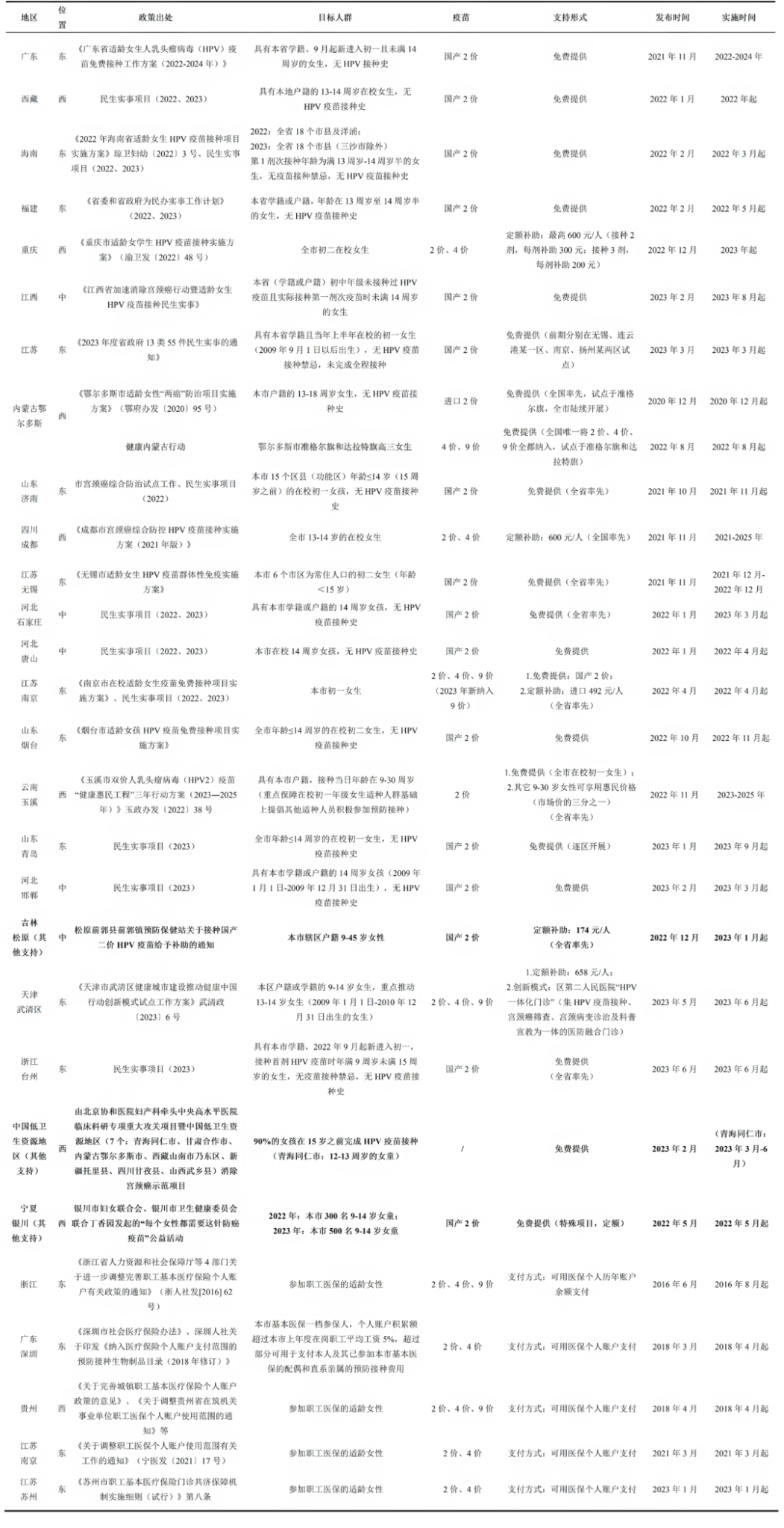Policy Updates
01
Adjustment of Members of the National Immunization Program Expert Advisory Committee
On August 28, the Department of Health and Immunization Planning of the National Administration of Disease Control issued a notice titled “Announcement on the Adjustment of the Members of the National Immunization Program Expert Advisory Committee” (hereinafter referred to as the “Notice”). According to the announcement, in light of the new circumstances and requirements in infectious disease prevention and control as well as vaccine management, and taking into account institutional restructuring, changes in expert positions, and recommendations from relevant departments, the National Administration of Disease Control and the National Health Commission have carried out a new round of adjustments to the membership of the Expert Advisory Committee and have revised its charter.
The new Expert Advisory Committee is composed of specialists from fields including epidemiology and health statistics, microbiology, clinical medicine, health policy and health economics, vaccinology, immunology, and immunization practice. The term of appointment remains three years. The number of committee members has increased from 27 to 30, and the updated roster of members has been released by the National Administration of Disease Control.
https://www.ndcpa.gov.cn/jbkzzx/c100014/common/content/content_1961007702056800256.html
02
National Health Commission: 18 Provinces Provide Free HPV Vaccination for Eligible Girls, Covering 60% of the Target Population
The National Health Commission recently announced that, as of now, 18 provinces—including Guangdong, Hainan, and Fujian—as well as cities such as Zhengzhou, Ordos, and Shijiazhuang, have introduced HPV vaccination into government public well-being programs. These initiatives provide free domestically produced bivalent HPV vaccines to age-eligible girls, with the policy now covering approximately 60% of the target population nationwide.
Educational authorities are also actively involved in awareness campaigns to boost vaccination willingness and immunization coverage among students. At present, the National Immunization Program Information System has achieved full integration across both disease control institutions and vaccination service providers, offering robust data support for real-time monitoring of vaccination progress and the optimization of policy decisions.
The Commission further stated that it will continue to expand free HPV vaccination services for eligible girls, strengthen public science communication, and encourage capable regions to carry out pilot programs, with the goal of steadily improving HPV vaccine accessibility.
https://www.nhc.gov.cn/wjw/jiany/202508/c4d0498c327d4b1298b567ec2371e1fb.shtml
Journal Article Recommendation
01
Trends Analysis on Vaccination Coverage of Influenza in Shandong Province, China
This article, published in Biomedical and Environmental Sciences, analyzed data from the Shandong Province Immunization Information System (IIS) spanning 2015–2024. Using a Joinpoint regression model, the study examined temporal trends in first-dose influenza vaccine coverage and its influencing factors, with the aim of providing evidence to inform local immunization strategies.
The analysis was stratified by sex, urban–rural status, age group (0–3 years, 3–6 years, 6–18 years, 18–60 years, >60 years), and economic region (high-, middle-, and low-GDP areas) to identify turning points and trend characteristics in coverage changes.
Findings showed that from 2015 to 2024, a total of 23,470,116 first doses of influenza vaccine were administered. Annual vaccination coverage increased from 0.42% in 2016 to 4.84% in 2023, but this remained substantially lower than in developed areas such as Shanghai (only about 50% of Shanghai’s coverage). Current influenza vaccination policies in China mainly prioritize key groups, including healthcare workers, adults aged 60 years and older, patients with chronic diseases, pregnant women, and children under 6 years of age, leading to significant differences in coverage across populations. Stratified results indicated that coverage was higher among females than males, and higher in rural than in urban areas, with 2022 emerging as a common turning point. Children aged 3–6 years showed the greatest improvement in vaccination rates, surpassing the 0–3 years group to become the highest-coverage age segment. Although coverage in adults over 60 years increased, it remained lower compared to regions such as Beijing, where influenza vaccination is provided free of charge for the elderly. Coverage among the 0–3 years group shifted from decline to increase in 2018, the 3–6 years group continued to grow steadily, while the 6–18 years group began to decline after 2022. For the 18–60 years group, coverage growth stabilized after 2020. The >60 years group exhibited two turning points, in 2017 and 2020, with an average annual percentage change (AAPC) reaching as high as 102.65%. High-GDP regions consistently showed higher coverage than middle- and low-GDP regions. For high- and low-GDP areas, 2020 marked a shift from rapid growth to slower growth, while middle-GDP regions entered a plateau phase in 2022.
The study recommends continued efforts to promote vaccination among preschool children and older adults, with particular emphasis on increasing public health investment and free vaccination policies in economically disadvantaged regions. It also highlights the need to address inequalities between urban and rural populations and between sexes. Advancing immunization strategies for the entire population across the life course and incorporating seasonal influenza vaccination into routine preventive healthcare will be essential to further improve overall public health.
https://www.besjournal.com/en/article/doi/10.3967/bes2025.063
02
Post-marketing surveillance for the safety of the quadrivalent human papillomavirus vaccine: a retrospective real-world study in China
This article, published in Expert Review of Vaccines, used data from the Ningbo Regional Health Information Platform (NRHIP) in a study that looked back at past cases to assess the risk of autoimmune diseases and negative pregnancy outcomes within six months after receiving the quadrivalent HPV (4vHPV) vaccine among Chinese women. The study included 76,212 women aged 20–45 years who received at least one dose of 4vHPV between January 2018 and March 2021, with a total of 195,593 doses administered. The mean age at first vaccination was 33.87 years.
By integrating immunization registry records, electronic medical records, and the maternal–child health management system, the study conducted active monitoring of seven predefined autoimmune diseases—Graves’ disease, Hashimoto’s thyroiditis, type 1 diabetes, systemic lupus erythematosus, multiple sclerosis, optic neuritis, and uveitis—within six months after vaccination. It also tracked adverse pregnancy outcomes among women vaccinated during pregnancy or within 30 days before conception, including stillbirths and 23 categories of major congenital malformations diagnosed within three months after birth. The mean follow-up period was 0.71 years.
The results identified 113 new cases of autoimmune diseases: 24 cases of Graves’ disease (incidence rate 44.21/100,000 person-years, 95% CI: 29.63–65.96), 71 cases of Hashimoto’s thyroiditis (130.84/100,000 person-years, 95% CI: 103.69–165.11), 1 case of optic neuritis (1.84/100,000 person-years, 95% CI: 0.26–13.07), and 17 cases of uveitis (31.31/100,000 person-years, 95% CI: 19.47–50.37). Overall, the incidence of predefined autoimmune diseases among 4vHPV vaccine recipients was lower than that reported in previous epidemiological studies of the general female population in China. Among 168 women vaccinated during pregnancy or within 30 days before conception, no stillbirths were observed, and only five infants were diagnosed with congenital heart disease, with no evidence of a causal relationship to vaccination.
This study represents the first active post-marketing safety surveillance of the 4vHPV vaccine in China. It found no significant association between vaccination and the seven autoimmune diseases, stillbirth, or major congenital malformations. The findings support a favorable benefit–risk profile of the 4vHPV vaccine among Chinese women, providing important real-world evidence to optimize vaccination strategies and strengthen public confidence.
https://doi.org/10.1080/14760584.2025.2550972
03
Real-world safety of herpes zoster vaccines: A pharmacovigilance study based on the vaccine adverse event reporting system (may 2006–december 2024)
This article, published in Vaccine, analyzed over 110,000 reports from the U.S. Vaccine Adverse Event Reporting System (VAERS) between May 2006 and December 2024 related to herpes zoster vaccines, with the aim of comparing the real-world safety profiles of the recombinant zoster vaccine (RZV) and the live attenuated vaccine (ZVL). Reports were categorized into three groups: RZV-only vaccination, ZVL-only vaccination, and combined vaccination. The study particularly focused on three adverse events of special interest: allergic reactions, Guillain–Barré syndrome (GBS), and syncope.
The results showed that among individual case safety reports (ICSRs) involving single-vaccine administration (>90% of all reports), serious adverse events (AEFIs) were reported more frequently following ZVL (11.2%) compared with RZV (4.6%), with fatal outcomes accounting for 0.5% and 0.3%, respectively. Most ICSRs for both vaccines originated from the U.S., with ZVL reports concentrated prior to 2017. Across both vaccines, most reported cases involved women and adults aged 60–69 years, while serious AEFIs tended to occur in older individuals. The majority of AEFIs occurred within 7 days of vaccination, peaking at 0–2 days post-vaccination, with serious events generally occurring later than non-serious ones. In terms of event types, RZV was mainly associated with transient reactogenicity symptoms such as fever, pain, chills, and headache, whereas ZVL showed stronger associations with herpes zoster recurrence as well as neurological and ophthalmic complications. No abnormal safety signals were detected for allergic reactions or syncope with either vaccine. However, inconsistent signals for GBS were observed with RZV, indicating the need for further research into its potential safety implications.
The study concluded that based on VAERS pharmacovigilance data, RZV demonstrates an overall favorable safety profile in real-world use. Nonetheless, given the inherent limitations of passive surveillance systems, causality cannot be established, and the findings should be interpreted as hypothesis-generating, warranting confirmation in controlled studies.
https://doi.org/10.1016/j.vaccine.2025.127628
04
The Vaccine Trust Framework: mixed-method development of a tool for understanding and quantifying trust in health systems and vaccines
This article, published in The Lancet Global Health, endeavors to develop and validate a tool for systematically understanding and quantifying trust—the Vaccine Trust Framework (VTF)—to support vaccine demand promotion and public health policymaking.
The study employed an exploratory sequential mixed-methods design across Nigeria, Kenya, and Pakistan, encompassing multiple vaccine contexts (childhood vaccines, HPV vaccines, and COVID-19 vaccines). In the initial phase, ethnographic research, including in-depth interviews and participant observation, was utilized to explore the elements of trust in diverse cultural settings and to construct a preliminary theoretical framework. In the subsequent phase, expert consultations and iterative revisions refined the framework into four core domains of trust: health system promise, health system delivery, vaccine promise, and vaccine delivery, which were further operationalized into 15 measurable indicators. In the final phase, nationally representative surveys were conducted in Kenya (n=3670) and Pakistan (n=3734). Confirmatory factor analysis and logistic regression tested the psychometric properties of the framework and examined the relationship between trust levels and vaccination behaviors.
The VTF, grounded in ethnographic insights, comprises four interrelated domains—health system promise, health system delivery, vaccine promise, and vaccine delivery—along with 15 quantifiable dimensions. The framework demonstrated robust construct validity, internal consistency, and cross-cultural applicability, with Cronbach’s α coefficients for each domain exceeding 0.8, indicating high reliability. Survey results indicated that elevated levels of trust were significantly associated with both actual vaccination behaviors and intentions. Trust scores consistently correlated positively with vaccine uptake across all types of vaccines investigated. Regional variations in trust were also observed within Kenya and Pakistan, and these patterns closely reflected local health system characteristics and perceptions identified in the qualitative phase.
The VTF provides a validated, context-sensitive tool for assessing trust in health systems and vaccines in low- and middle-income countries. It can function as a predictive measure, a guide for intervention design, and a monitoring instrument embedded within programs or studies to quantify levels of trust.
https://doi.org/10.1016/S2214-109X(25)00245-1
Content Editor: Tianyi Deng
Page Editor: Ruitong Li





